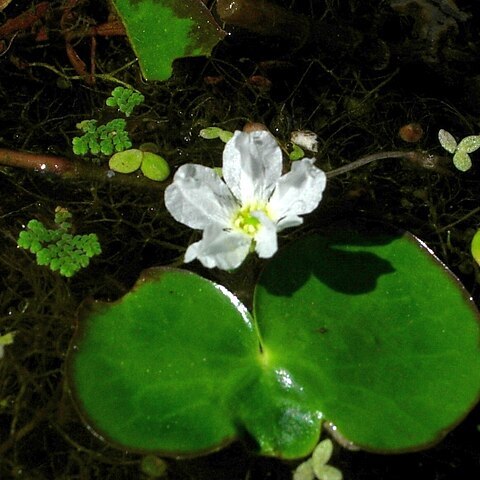A herb which grows in water. The stem forms roots at the nodes. Its roots are fixed in the mud. It grows to 1 m or more tall. The leaves are round and heart shaped and float. They are 1-6 cm long by 1-5 cm wide. The flowers are of two forms. They are white with a yellowish tinge and are in dense clusters. The capsule is half round. The seeds are brown and 1 mm across.


